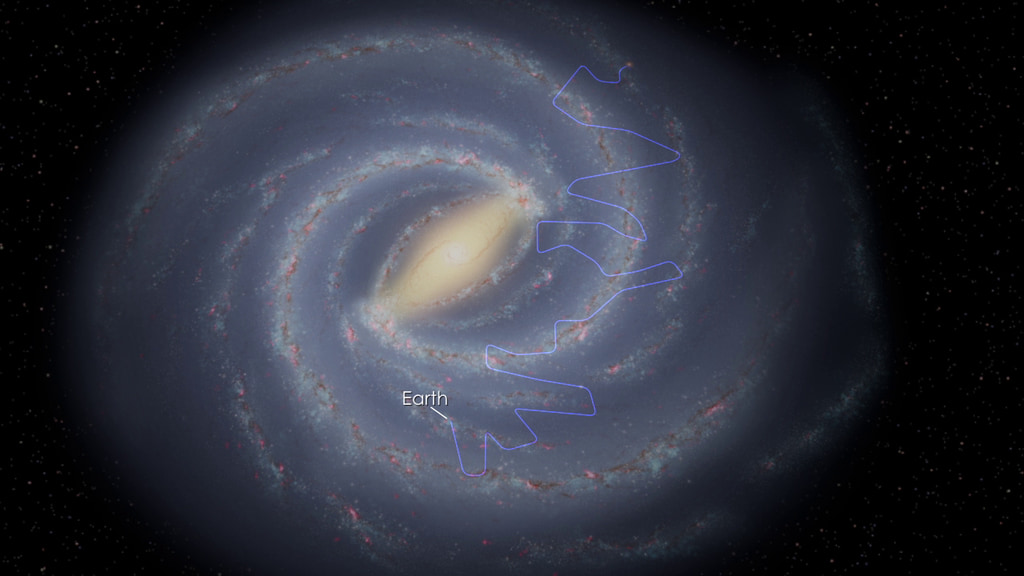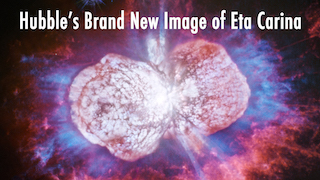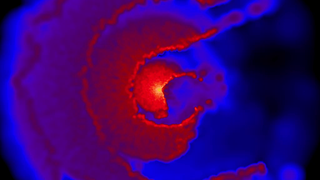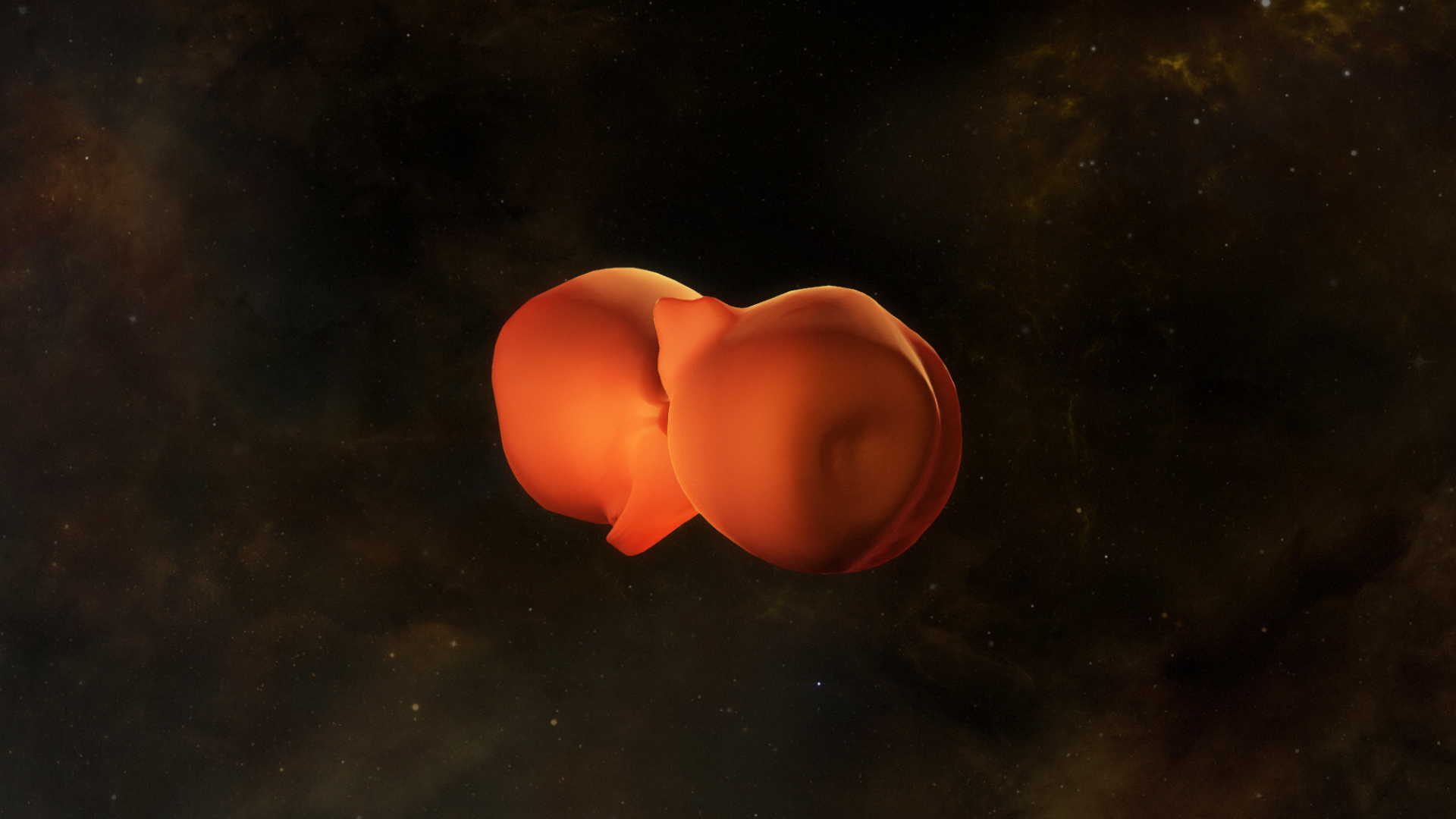Superstar Eta Carinae Shoots Cosmic Rays
Zoom into Eta Carinae, where the outflows of two massive stars collide and shoot accelerated particles cosmic rays into space.
Credit: NASA’s Goddard Space Flight Center
Music: "Expectant Aspect" from Killer Tracks.
YouTube Link
Complete transcript available.
A new study using data from NASA’s NuSTAR space telescope suggests that the most luminous and massive stellar system within 10,000 light-years, Eta Carinae, is accelerating particles to high energies -- some of which may reach Earth as cosmic rays.
Cosmic rays with energies greater than 1 billion electron volts (eV) come to us from beyond our solar system. But because these particles -- electrons, protons and atomic nuclei -- all carry an electrical charge, they veer off course whenever they encounter magnetic fields. This scrambles their paths and masks their origins.
Eta Carinae, located about 7,500 light-years away in the southern constellation of Carina, contains a pair of massive stars whose eccentric orbits bring them unusually close every 5.5 years. The stars contain 90 and 30 times the mass of our Sun.
Both stars drive powerful outflows called stellar winds, which emit low-energy X-rays where they collide. NASA’s Fermi Gamma-ray Space Telescope observes gamma rays -- light packing far more energy than X-rays -- from a source in the direction of Eta Carinae. But Fermi’s vision isn’t as sharp as X-ray telescopes, so astronomers couldn’t confirm the connection.
To bridge this gap, astronomers turned to NASA's NuSTAR observatory. Launched in 2012, NuSTAR can focus X-rays of much greater energy than any previous telescope. The team examined NuSTAR observations acquired between March 2014 and June 2016, along with lower-energy X-ray observations from the European Space Agency’s XMM-Newton satellite over the same period.
NuSTAR detects a source emitting X-rays above 30,000 eV, some three times higher than can be explained by shock waves in the colliding winds. For comparison, the energy of visible light ranges from about 2 to 3 eV.
The researchers say both the X-ray emission seen by NuSTAR and the gamma-ray emission seen by Fermi is best explained by electrons accelerated in shock waves where the winds collide. The X-rays detected by NuSTAR and the gamma rays detected by Fermi arise from starlight given a huge energy boost by interactions with these electrons.
Some of the superfast electrons, as well as other accelerated particles, must escape the system and perhaps some eventually wander to Earth, where they may be detected as cosmic rays.

Eta Carinae shines in X-rays in this image from NASA's Chandra X-ray Observatory. The colors indicate different energies. Red spans 300 to 1,000 electron volts (eV), green ranges from 1,000 to 3,000 eV and blue covers 3,000 to 10,000 eV. For comparison, the energy of visible light is about 2 to 3 eV. NuSTAR observations (green contours) reveal a source of X-rays with energies some three times higher than Chandra detects. X-rays seen from the central point source arise from the binary’s stellar wind collision. The NuSTAR detection shows that shock waves in the wind collision zone accelerate charged particles like electrons and protons to near the speed of light. Some of these may reach Earth, where they will be detected as cosmic ray particles. X-rays scattered by debris ejected in Eta Carinae's famous 1840 eruption may produce the broader red emission.
Credit: NASA/CXC and NASA/JPL-Caltech
Credits
Please give credit for this item to:
NASA's Goddard Space Flight Center. However, individual items should be credited as indicated above.
-
Producer
- Scott Wiessinger (USRA)
-
Science writer
- Francis Reddy (University of Maryland College Park)
-
Graphics
- Francis Reddy (University of Maryland College Park)
Release date
This page was originally published on Tuesday, July 3, 2018.
This page was last updated on Wednesday, May 3, 2023 at 1:46 PM EDT.



